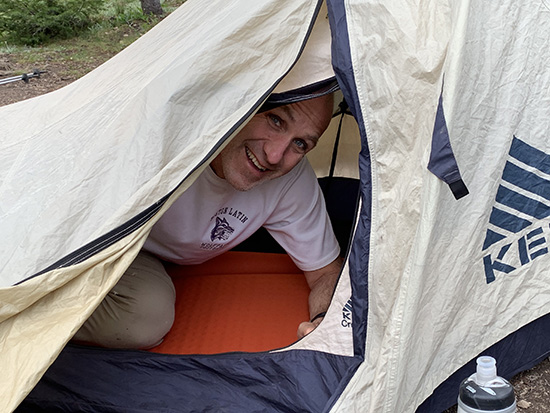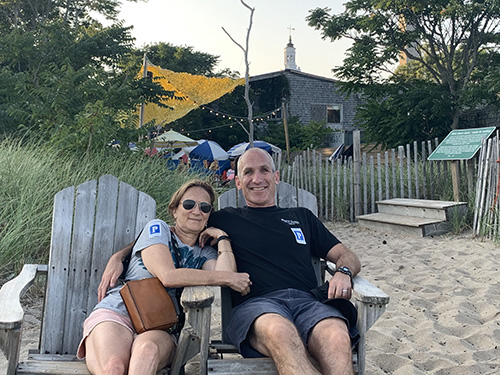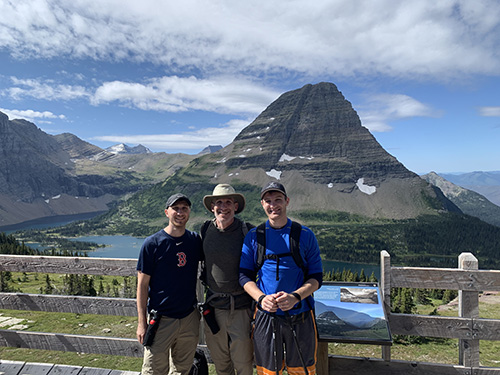More than 30 people, including representatives from 18 CDCs, participated in the first reconvening of the MACDC/LISC Energy Cohort. This is the first formal energy partnership between the two organizations since we convened the CDCs several years ago as LISC launched its Green Retrofit Initiative. At the September 18 Convening, we focused on two timely agenda items. The first was an update on the State's Solar SMART Program presented by Dick Jones of Blue Hub Capital and Ben Underwood of Resonant Energy. They also spoke about the Energy Justice Option to, among other things, better serve low-income households who reside in privately-owned affordable housing. The second agenda item was a presentation by Adam Parker and others from Rocky Mountain Institute's REALIZE Program. They presented its Zero Over Time Initiative, to help property owners and managers move successfully toward highly energy efficient buildings where remaining greenhouse gas emissions are offset by renewable energy generation.
News
MACDC and LISC Launch Energy Cohort
September 25th, 2019Three Key Learnings Central to MACDC’s Operations and IT Management
September 24th, 2019What would you do if someone came up to you and said, “I have an all-in-one solution that can increase your organization’s productivity, reduce costs, and enable you to focus more on your mission?” You would probably be skeptical, or simply ignore the person altogether because it just was an annoying sales pitch with an inevitable catch. Oftentimes, technology, in all its myriad iterations, does this to us daily (I’m not yet convinced that my life would be better if my refrigerator could tell me the weather, or if my stereo system could order laundry detergent just by my talking to it).
That being said, new technology can help advance our work if used thoughtfully and strategically. This article will focus on how technology has transformed MACDC’s operations for the better. Considering that there are many resources addressing ways for nonprofits to increase productivity and reduce costs through IT, I hope not to be repetitive, but rather to highlight how we did it and the succeeding benefits from this effort.
Over the past six years, we’ve progressed as a team to using data collected in real time to help us make decisions. Along the way, we’ve cut our electricity bill in half, reduced our phone bill by $1,500 annually and improved our staff capacity. But this process took time (years, not months), and required that we raise funds, hire consultants, and dedicate time to staff engagement and training. The result, however, is significant. While we’re a small team of eleven staff with a $1.5 million annual operating budget, we’re higher performing and have more time to focus on our mission.
I thought I would share three key learnings that are central to MACDC’s approach to operations and IT:
- It’s not about technology, but people;
- Be current, not cutting edge;
- Climb hills, not mountains.
It’s not about technology, but people
“Do you know what you call a leader with no followers? Just a guy taking a walk.”- Vice President Russell, The West Wing
There’s comfort and stability in doing something the same way you’ve done it for years, but that doesn’t mean it’s the best way, especially when it comes to technology. At MACDC, we knew that we needed to update our data management technology, systems, procedures and culture. We also knew that we could not do it all at once. So even after we made the decision to switch to Salesforce, we didn’t make the move immediately, nor did we have all the organization’s programs and operations move over at the same time.
We started by building Excel spreadsheets that captured much of the data eighteen months before we began to move these business functions into Salesforce. Why? It’s often easier to update and change an Excel spreadsheet than it is to change workflows and processes in Salesforce (This also makes the formal discovery phase less arduous and filled with guesswork). You’re able to engage with staff at the beginning of the migration process where you’re defining what the processes will be in the first place. You’re able to begin reinforcing new behavior immediately and the staff are bought in to the changes. Finally, even though I was leading the project, I wasn’t in charge of managing the capturing of the data; leadership of this work went to another staff member and allowed for additional project team ownership.
Even with the level of engagement that comes with staff helping lead the change, expect more time to be spent on training and support than building out the system technologically. Each person learns differently and has different strengths and weaknesses. This sounds like common sense, and it is. But it’s worth mentioning because you need to plan time for multiple trainings and then extra time for one-on-one sessions. It’s also important to have your organization’s leadership attend all the trainings. Everyone is busy, but if you want significant institutional change to occur, you need your executive director engaged and actively learning with the team.
Be current, not cutting edge
When do you stop fixing your old car, I mean, file server?
You’ve probably had an old car that at a certain point is just too old to keep repairing. You need to buy new tires, but the cost of the tires will be more than the value of the car itself. Maybe there’s some nostalgia, memories of a spontaneous road trip, or the time it took to save the money to buy the car in the first place that keeps you from moving on. You can say this about your first car, but have you ever said that about your clunker of a file server?
This was an important lesson for us. It’s just too expensive to be on your outdated file server. We were presented with a challenge that needed to be quickly resolved. Our file server was approaching 95% capacity and the machine was, I believe, more than 7 years old. It had lived a good life and had done its job well, but it was time to move on. We had a decision to make: move to the cloud or not. Well, the decision was easy given that ordering a new server didn’t align with our goal of being current in our technology without being cutting edge. Cloud services by late 2015 were well developed and had significant adoption. We were able to review capabilities and decide with high confidence of the technology’s stability.
Running outdated systems, such as an aged, on-site file server, means paying to maintain the physical hardware in your office, which requires secured facilities, climate control, regular maintenance, monitoring and backups that often require onsite visits by an IT professional. Our old solution was not only more expensive than our current solution, but it didn’t provide nearly as many features that moving to the cloud provides. Many nonprofits have moved to the cloud; it’s just common sense and there are many providers of cloud services that meet the needs of your organization. Remember, you may love your old car, but that old server is just wasting money, staff capacity, and mission success capabilities.
Start by climbing hills, not mountains
Don’t run marathons before you can run a 5K.
MACDC’s tech overhaul didn’t start with mapping business processes that would be used to build out Salesforce. Rather, we started with moving from our file server to the cloud. We didn’t just copy and paste thousands of files either. We decided to organize our files going forward according to our lines of business. In the past, our server was messy; it likely had much more structure in the beginning than it did after many years of use by staff and interns. Our new model is still working very well after three plus years; staff do an excellent job of making sure files are well organized. Because we had so much storage space in the cloud, we moved all our old files to the cloud too, but there’s a rule: You can’t edit a file that’s archived. If you edit the file, it must be saved into the current file directory. This isn’t a personnel policy, but a tech “rule.” Staff simply cannot save a file to Archives.
A tidal wave of change
“Fear is the mind killer.” – from Dune by Frank Herbert
I don’t believe many people work for nonprofits because they love operations or IT. You’re likely here because there’s a driver within you, maybe in your spirit or soul, that wants to contribute to our world that exceeds earning a wage for your efforts. But a nonprofit is a complex system that requires solid operations to run smoothly with current IT yielding results greater than antiquated technology. Unfortunately, IT can be confusing, freeze up and not work, and especially when it’s first launched, have bugs. Even so, we’re in an era that requires us to adapt far more quickly to significant changes in the ways we work and it’s only going to continue to accelerate. I think it’s worth it to seize upon our IT insecurities and find ways to build efficiencies into our operational systems. Through this process, you’ll likely reduce costs, restructure operations to be more efficient and increase your focus on mission success.
Joe's Summer Sabbatical
September 9th, 2019Thanks to the generosity and support of the MACDC board and staff, I was able to take a two-month summer sabbatical this year – my first full summer vacation in a very long time. I was able to spend lots of time with various family members, read books, travel, and enjoy countless hours of biking, swimming and hiking! For those wondering “what did you do all summer” I figured that I would share some of the highlights.
Syracuse - The sabbatical started with a 4-day trip to Syracuse to see my dad. My wife Dina and I picked up our son Mike in Albany and drove to Syracuse to hang with my dad and his partner. On the way back to Boston, we packed up Mike’s apartment in Albany (he had just quit his job) and brought him home to continue his search for a job in New York City.
Backpacking - After celebrating the 4th of July in Boston (including attending the Rolling Stones Concert at Gillette Stadium!), I flew to Idaho to meet up with my brother for a backpacking trip in the White Clouds & Saw Tooth Mountain area. The scenery was incredible; it was great to hang out with my brother; the hiking was challenging but not exhausting; and I was able to sleep (sort of) on the ground in my tiny tent!

Boston - I then had 11 days in Boston with no travel. This was certainly the longest “stay-cation” of my life but I was able to get into a routine of biking, swimming, reading, visiting with a few friends and helping my son with his job search (mostly nagging).
My Dad's Birthday - In late July, my family and my brother’s family met up with my dad and his partner in Beacon, NY (the Hudson Valley region) to spend a weekend celebrating his 93rd birthday by going to not one, but two art museums (he loves art!) It was great for him to catch up with all four of his grandchildren and for the cousins to reconnect for the first time in many months. His quote of the day: “Birthdays are fun – I should have more of them!” I agree!
Cape Cod - Dina and I finally were able to take our own vacation on Cape Cod in early August (she was NOT on sabbatical after all!). We were unable to go last year so it was great to be back on the beaches where we only had two shark alerts! My Dad and Paula spent a couple of days with us (yes, our third visit of the summer!) and then Mike made a surprise visit as well to tell us that he had accepted a job offer from the New Israel Fund in New York City!

Reading books – not memos - After the Cape, we came back to Boston for a few more days of hanging around. I was able to make progress on my goal of reading more books than I usually do. Over the course of the summer, I was able to read: Washington Black, the Cairo Trilogy (Palace Walk, Palace of Desire and Sugar Street), The Bluest Eye, Evicted, Just Mercy, and Say Nothing. I enjoyed some good podcasts (check out Crimetown to learn about the mob in Providence) and TV shows (City on a Hill; Six Feet Under) and watched a fair number of Red Sox games (although not as many as I would have thought) Of course, none of this interfered with biking or swimming (or both) virtually every day I was in town. I don’t think I swam so much during the summer since I worked as a lifeguard in 1984!
Glacier National Park - My next adventure was to go to Montana with my sons Mike and Josh. We started our trip in Kalispel where we attended our first ever Rodeo. The scene was exactly what you might imagine with lots of families, women wearing awesome boots and men wearing their cowboy hats. There was much pageantry, including honoring our military and recognizing Native American heritage and culture. The competition was either incredible or awful, depending on your view of Rodeos, but it was definitely a great opportunity to experience a different piece of American culture. My kids loved it. We then spent four days hiking in Glacier National Park. We saw amazing scenery, lots of wildlife (including a Wolverine!) and walked along and over the Continental Divide. Spending four days hiking with my kids was a great way to spend time together (no cell phone service!), create memories and share new experiences. My son called the trip “magical” and it was.

Seattle - The three of us then drove to Seattle and they got to see for the first time how expansive and empty the American West can be. In Seattle, we met up with Dina and most of her family so we could celebrate her sister’s 60th birthday.
My Sabbatical Buddy - One special treat this summer was spending time with my 23-year-old son Mike. As noted, he quit his job on the same day that my sabbatical began and he began his new job with the New Israel Fund on the same day that I returned to work so we were both home and “unemployed” for the same 9 weeks! He has been in Albany for the past five years so we have not had nearly so much time to hang out and honestly, we will probably never have a summer like this again. We talked, we played basketball, we ate, we cooked (Dina loved coming home to our (mostly his) meals!), we worked on his job search and then his apartment search. Dina says he was my “sabbatical buddy”! It was bittersweet to drive him to New York City on Labor Day weekend and help him set up his new apartment in Astoria, Queens. I am proud that he had the courage to quit a job he disliked, to pursue something that he really cares about (peace and democracy in Israel) and to take on the adventure of living in New York. But I’m really going to miss having him around.
If you are wondering whether I really avoided work during the sabbatical, the answer is “mostly”. While I contacted the staff on one or two occasions early on, I did not talk/email/text with any staff for the last five or six weeks. Yes, I occasionally checked my email, but I did not respond to them and very much enjoyed reading an email and saying to myself “I don’t have to deal with that!” Overall, I’ve been pretty checked out and was able to enjoy my summer without thinking about work very much.
None of this would have been possible if MACDC did not have such a terrific and dedicated staff. I want to especially thank Shirronda Almeida for serving as interim executive director and to everyone on the staff who picked up my workload over the summer. I think it was a great learning opportunity for them and the experience will make our organization stronger, more stable and better prepared for the future.
I am eager to get back to work (starting with those emails and memos that are waiting for me) and I am excited about our agenda for this fall. But if you catch me day dreaming at a meeting, you can probably guess that I’ll be reliving my summer memories!









